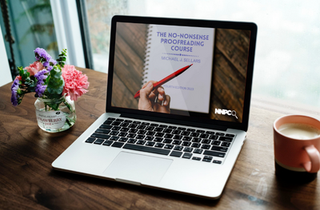|
Grammar can be a tricky subject, and one common issue that arises is the use of dangling modifiers. Dangling modifiers can create confusion and ambiguity in a sentence, but are they really a big deal? In this blog post, we'll define what a dangling modifier is, discuss why it can be a problem, and offer some tips for avoiding them.
What is a Dangling Modifier? A dangling modifier is a type of misplaced modifier that is not clearly or logically connected to the subject of a sentence. In other words, the modifier "dangles" without a clear referent in the sentence. This can result in confusing or even unintentionally humorous sentences. Here's an example of a dangling modifier: Walking through the park, the flowers were beautiful. In this sentence, the modifier "walking through the park" is not clearly connected to a subject. Who or what is walking through the park? The sentence implies that it's the flowers, which is obviously not correct. Why Dangling Modifiers Can Be a Big Deal Dangling modifiers can cause confusion or ambiguity in a sentence, which can make it difficult for readers to understand the intended meaning. They can also create unintentional humor, which may not be appropriate in all situations. In addition, using too many dangling modifiers can make writing seem unprofessional or sloppy. Here are some reasons why dangling modifiers can be problematic: They can change the meaning of a sentence. Dangling modifiers can lead to sentences that say something unintended or different than what was intended. They can confuse readers. Dangling modifiers can make it difficult for readers to understand what the writer is trying to say. They can make writing seem unprofessional. Using too many dangling modifiers can make writing seem unpolished or careless. How to Avoid Dangling Modifiers Fortunately, there are some easy ways to avoid dangling modifiers. Here are a few tips: Make sure the subject is clear. A modifier should be clearly connected to the subject of the sentence. Place the modifier close to the subject. When possible, place the modifier right next to the subject it's modifying. Rewrite the sentence. If you can't fix a dangling modifier by simply moving it closer to the subject, try rewriting the sentence. Here's an example of a corrected sentence: Walking through the park, I saw beautiful flowers. In this sentence, the subject ("I") is clearly connected to the modifier "walking through the park." The sentence now makes sense and is free of dangling modifiers. Conclusion While dangling modifiers may seem like a minor issue in grammar, they can cause confusion and ambiguity in writing. They can also make writing seem unprofessional or sloppy. However, with some careful attention and editing, it's easy to avoid dangling modifiers and create clear, concise, and effective writing.
0 Comments
In today's fast-paced world, concentration is one of the most valuable skills we can possess. And in the world of proofreading, this is doubly so. For the proofreader, concentration is key. However, with so many distractions around us, it can be difficult to stay focused for extended periods. Fortunately, there are techniques you can use to maintain your concentration and improve your productivity. Here are some of the most effective techniques for maintaining concentration:
Minimize Distractions
Take Breaks
Prioritize Tasks
Use Time Management Techniques
Practice Mindfulness
Get Enough Sleep
By using these techniques, you can maintain your concentration, improve your productivity, and achieve your goals more efficiently. Remember that everyone is different, so experiment with different techniques to find what works best for you. With practice, you can train your brain to maintain focus and achieve your desired outcomes. The words 'who' and 'whom' are often used interchangeably in everyday conversation, but they have different functions and are used in different contexts. Understanding the difference between 'who' and 'whom' can help you communicate more effectively and avoid common grammar mistakes.
'Who' and 'whom' are both pronouns, and they are used to refer to people. The difference between them is that 'who' is the subject of a sentence or clause, while 'whom' is the object of a verb or preposition. For example: 1. Who is going to the party tonight? 2. Whom did you invite to the party tonight? In the first sentence, 'who' is the subject of the verb 'is going.' It is asking for the identity of the person who is performing the action of going to the party. In the second sentence, 'whom' is the object of the verb 'did invite.' It is asking for the identity of the person who is receiving the action of being invited to the party. Another way to determine whether to use 'who' or 'whom' is to look at the function of the pronoun in the sentence. If it is the subject of a verb, use 'who.' If it is the object of a verb or preposition, use 'whom.' For example: Who is calling me on the phone? To whom should I address this letter? In the third sentence, 'who' is the subject of the verb 'is calling.' It is asking for the identity of the person who is performing the action of calling. In the fourth sentence, 'whom' is the object of the preposition 'to.' It is asking for the identity of the person to whom the letter should be addressed. While it is always correct to use 'who' as the subject of a sentence or clause, the use of 'whom' is becoming less common in modern English. In some cases, it may be considered more formal or old-fashioned. In informal speech or writing, it is often acceptable to use 'who' instead of 'whom.' For example: Who did you give the book to? (Informal) To whom did you give the book? (Formal) In conclusion, 'who' and 'whom' are both pronouns used to refer to people, but they have different functions. Use 'who' as the subject of a sentence or clause, and use 'whom' as the object of a verb or preposition. While it is always correct to use 'who' as the subject, the use of 'whom' is becoming less common in modern English and may be considered more formal or old-fashioned. In informal speech or writing, it is often acceptable to use 'who' instead of 'whom.' So, what's new in the Fourth Edition of The No-Nonsense Proofreading Course?
Firstly, the format. Feedback from my customers strongly indicated most people enjoyed the material on their laptops and iPads. So I've gone for a landscape ratio, so there's no more pinching and scrolling. It's still A4, so if you want to print it out, you can. I've spruced-up the design, too. I hope you like it! I've updated the business section. Some of the links were pointing to sites that have ceased to operate. I've also added a few newcomers (e.g. Unsplash for sourcing promotional images, and some new freelance markets). And that's pretty much it. The core of The No-Nonsense Proofreading Course was and, and remains, the same proofreading method I've been successfully using for more that thirty years. The plan is to update The No-Nonsense Proofreading Course yearly, weeding-out dead links and pointing readers in the direction of new useful resources. In today's digital age, having a website is essential for businesses of all sizes. A website is often the first point of contact for potential customers and can make a lasting impression on them. Therefore, it is crucial for businesses to ensure that their website is not only visually appealing but also free of errors. This is where proofreading comes in.
Proofreading is the process of carefully examining a text for errors in spelling, grammar, punctuation, and syntax. It is a crucial step in the website development process, and it can help businesses to enhance their online presence and reputation. Here are some reasons why it is essential for businesses to have their websites proofread: Avoids embarrassing mistakes: Spelling and grammar errors on a website can make a business appear unprofessional and careless. It can also create confusion for visitors, leading them to misunderstand the message or even lose trust in the business. Proofreading helps to ensure that the website is error-free, which helps to maintain the business's credibility and professionalism. Enhances user experience: A website that is free of errors is easier to read and navigate, providing visitors with a better user experience. This, in turn, can lead to increased engagement, longer visit times, and ultimately, more sales. Boosts search engine optimization: Search engines, such as Google, favor websites that are well-written and error-free. A website that has been proofread is more likely to have a higher search engine ranking, which can help to attract more visitors and increase visibility. Consistency in messaging: A business's website is often its primary communication tool, and it is essential that the messaging is consistent across all pages. Proofreading helps to ensure that the messaging is clear, concise, and consistent, which can help to reinforce the brand's identity and messaging. Saves time and money: Fixing errors on a website after it has been published can be time-consuming and costly. Proofreading before publication can help to avoid these issues, saving time and money in the long run. The importance of proofreading cannot be overstated. However, it can be challenging to spot errors in your own writing, which is why it is beneficial to seek the help of a professional proofreader or to take a proofreading course. The No-Nonsense Proofreading Course is an excellent resource for businesses looking to improve their proofreading skills. This course is designed to teach individuals how to identify common errors in writing, how to correct them, and how to improve the overall quality of their writing. The course is user-friendly, comprehensive, and provides hands-on practice to help users apply what they have learned. In conclusion, having an error-free website is essential for businesses to attract and retain customers, enhance their online presence, and maintain their credibility and professionalism. Proofreading is an essential step in the website development process, and it is worth investing in to ensure that the website is error-free. The No-Nonsense Proofreading Course is an excellent resource for businesses looking to improve their proofreading skills and enhance the quality of their writing. Why your proofreading website needs a sitemapWhat is a sitemap and why should you have one? At its most basic, a sitemap is a blueprint of your website that helps a search engine find, crawl and efficiently index all of the content and its specific location on your website. If you've gone to the trouble of creating a professional website for your proofreading business, regardless of how simple or sophisticated your website is, your primary goal is to attract visitors and potential proofreading clients. In short, having a sitemap will greatly help you to achieve that goal. Initially, your new proofreading site is going to attract visitors via search engines such as Google, Bing, Yahoo etc. through organic searches, and while there is no requirement to have a sitemap (because search engines will eventually get around to finding you anyway) having one will definitely increase your chances of appearing in their search listings. In Google's own words: Having your site crawled by Google might sound a little creepy, but in this context it's essential if your proofreading business is going to succeed online. Besides, if they're going to crawl your site anyway, by providing a sitemap you're preparing your new business for the best possible start from the get-go by making it much easier for Google to index your site so it can better understand what it's about and then rank it accordingly in its search listings (SERPS). Okay, so that's what a sitemap is, a basic blueprint. So why should my website have a sitemap?The bottom line is that all websites want to be found and to appear in search listings (or why have a site at all?). Once again, if you've gone to the trouble of learning to proofread with the help of our Proofreading course, creating a website for your proofreading business, then you most definitely want it to be found, and a very useful by-product of having a sitemap is that it not only helps you get found, but it also helps greatly with your SEO efforts. If you apply good SEO disciplines during the creation and ongoing maintenance of your website, then by including your chosen keywords in meta descriptions, post and article titles, and image names etc. those good SEO practices will be found and indexed an awful lot quicker if you have a sitemap to guide the way. So how do I create a sitemap for my proofeading site?Thankfully, with the exception of WordPress, they’re mostly done automatically which is a godsend if you're not the techie type Let's start with the easy ones. Wix, Weebly and most other template-based site builders (free or otherwise) all automatically generate sitemaps by default. WordPress is slightly different in that a sitemap isn’t automatically created, but creating one is very easy using a dedicated plugin. For our WordPress sites we use the free ‘Google XML Sitemaps’ plugin. To create a WordPress sitemap using the Google XML Sitemaps plugin, simply install and activate the plugin. Done. Okay. So, depending on how or where you created your website, you now have access to your sitemap. Now it's time to submit your sitemap to the search engines, or more accurately, you're going to submit the location of your sitemap to the search engines. Regardless of the platform you created your website on (Wix, Weebly, WordPress etc.), here's what you'll be submitting: website-name.com/sitemap.xml Obviously the 'website-name' part of the URL will be your own actual website name! Now it's time to submit (the location of) your sitemap to the search engines. Submit your sitemap to Google: (If you need a quick refresher about Google Search Console, go take a look at my last article 'Your Proofreading Business Website SEO and Google'. Click here).
That's it! Submit your sitemap to Bing:
That's it! With regards to Yahoo: On July 29, 2009, Microsoft and Yahoo! announced a deal in July 2009 in which Bing would henceforth power Yahoo! Search, so submitting your sitemap location to Bing pretty much takes care of Yahoo too. Job done! You can now be safe in the knowledge that the major search engines are now aware of your proofreading business website and will henceforth crawl and add to their site index for your site on a regular basis. Now it's down to you to keep posting relevant, keyword focused articles along with the usual best SEO practices of using keyword rich descriptions for both titles, metadata descriptions and image names. Owning and maintaining a website that promotes your proofreading business may seem daunting, but in reality, it's a case of taking small but regular steps that will incrementally improve the success of your business. Submitting a sitemap is just one more small step. Bye for now! Jeff Full disclosure & disclaimer… Mike and I are not affiliated in any way to any sites listed above. This information is presented without condition or for personal profit in the hope that, having bought The No-Nonsense Proofreading Course you can make money proofreading without delay. Proofreading is harder than it looks, and needed more than you think.Just a quick blog post to highlight two things The No-Nonsense Proofreading Course frequently strives to hammer home.
The image below illustrates both points very well. Proofreading is harder than it looks...Some of you will have spotted the error immediately. Most of you, I imagine, took a little longer. Confession time: it took me a couple of minutes. Why? Because I immediately went searching in the small print and skimmed the heading. And why did I do that? Because it seems more likely that an error that had actually ‘gone to print’ is more likely to have ‘snuck through’ in a smaller point size. I also have a theory that spelling errors are more difficult to spot when a word is captialized. Further, I think this problem is exacerbated when the error is ‘concealed’ among similarly configured characters. Here, we have MULITIGRAIN, with the error hidden in this cluster: LITI. All those comparable bars and stems is a recipe for disaster. This is why, in The No-Nonsense Proofreading Course, I make a point of telling my readers never to criticize anyone for missing an error. Even other proofreaders. Especially other proofreaders. Because we all make mistakes. Or, in the case of proofreaders, we all miss mistakes. It happens. The proofreader (assuming there was one) who signed-off the artwork for this item of packaging will be kicking themselves and will doubtless be on the receiving end of a lot of criticism from their employer or client. In The No-Nonsense Proofreading Course, there’s a whole chapter dedicated to dealing with this kind of thing (Chapter Eleven: What to Do When It All Goes Horribly Wrong). One of the most important steps is letting your employer or client know what steps you’ll be taking to ensure his kind of thing doesn’t happen again. In the case of the MULITIGRAIN incident, there is one step the proofreader could have taken which would have dramatically highlighted the error. What is it? Use your ears. For as long as I’ve been proofreading (since 1989!) the notion that you should read the proof aloud has been common practice. Whilst this is very effective, and I strongly recommend doing it, it has one drawback. You are speaking aloud what your eyes are seeing. If your eyes don’t see the error, chances are you’ll simply say aloud a corrected version of the word or words. Thanks to modern technology, there’s a solution. Text to Speech. With free online software like Zamzar, it’s a cinch to convert a text, Word or even PDF file to MP3 format. Then you simply ‘listen to the text’. An error like ‘mulitigrain’ will jump right out at you. ...and needed more than you think.So, here’s a spelling error that can cause reputational damage and incur significant costs to put right and there isn’t a publisher or editor anywhere in sight. It’s on the packaging for a loaf of bread! So, who would be responsible for this? Well, a marketing and design agency is very likely to have been involved. That agency will have employed a graphic designer, possibly an artworker and a copywriter. They may have also employed the services of a proofreader. So, marketing and design agencies are a great source of work for a proofreader. It’s also possible that this piece of packaging was produced in-house. Which means the eagle-eye of a proofreader was required by a high-street retailer. This, my friends, is the motherlode of proofreading opportunities, the big wide world of ‘Everything That Isn’t Books’: brochures, catalogues, leaflets, flyers, manuals, reports, bids, prospectuses, websites, e-shots, social media campaigns… Proofreaders are required wherever the printed word (be it in ink or pixels) is used. When printing errors have the potential to cause significant reputational damage and incur big costs, that’s where proofreaders are needed. Many of these businesses will be very aware of their need for proofreaders. Many won’t. Your job is to reach out and educate these people… before it’s too late! Speak again soon, Mike If you think you've got what it takes to be a proofreader (of literary manuscripts or polythene packaging for baked goods), why not take a long, hard look at The No-Nonsense Proofreading Course? Click here for details.
Your Proofreading Business, SEO and Google.Your website is just the startIf you’ve been following my previous articles relating to the goal of becoming a self-employed proofreader, you’ll be aware that having your own website to present your proofreading business to the world involves more than simply creating a website. Building and promoting your site are pretty much covered in my previous articles, but this time, I thought I’d backtrack a little to explain the importance of Google and why you should try to stay in its good books. What is Google? Obviously, you know the answer to this one. Google is a search engine. But what does that mean? Well, it’s a piece of software that searches the internet in response to a query. So, if you google ‘proofreading courses’, Google will send its digital agents (sometimes called spiders) out into the internet looking for websites that match that query. But how does it know which websites to present first, which to present second, which to ignore entirely? When you key in a search query, the results are presented as a list, often referred to as SERPs (Search Engine Results Pages), which are listed in decreasing importance in relation to the original search query. In other words, the websites that most accurately answer or explain the original search query are listed at the top of the SERPs. Pretty simple, huh? Well, the basic function of keying a search query and receiving a list of the most appropriate answers may be simple to understand, but how Google arrives at the most appropriate answers is wrapped up in its own algorithms that decide which pages are shown and in which order. Needless to say, those algorithms are a deeply guarded secret. It’s also worth remembering that the SERPs don’t represent Google customers. The person keying in a search query (Keywords) is their customer, and Google is trying to deliver the best results for that customer. In establishing yourself as a freelance proofreader, you obviously want to appear at the top of the SERPs (or as near as possible) whenever your target search phrase (Keyword) is keyed into Google Search, because in doing so, you’ll enjoy a steady flow of visitors to your website. Make no mistake though, appearing at the top of the SERPs for a given phrase or keyword is the holy grail and getting there takes time and effort. Why Should You please Google? Since appearing in 1997, Google has been hands-down the number one search engine globally. Excluding China, it dominates every metric of search with approximately 90% of the global market share in 2019. In short, Google doesn’t just lead search engine market share, it dominates it. Search Engine Global Market Share (approx.)
The bottom line is this: pleasing Google and playing by their rules isn’t an option, it’s a must if you want your business to succeed online. This last point is so important that if you take nothing else from this article, please understand this. Google & SEO So, you’re on board with the notion of pleasing Google, but how? By learning and applying the disciplines of SEO. SEO stands for Search Engine Optimization, and by applying the disciplines of SEO as a website owner, you are trying to increase the quantity and quality of search traffic to your website through organic search engine results. Central to achieving this is keeping Google’s search customers happy. SEO is where all of the jigsaw pieces of Google’s algorithm come together and are presented in the form of a list of websites (SERPs). In order for Google to compile those website lists, they’ve crawled the pages of those sites and ranked them in terms of their SEO qualities. On-site SEO to improve your search engine visibility In creating your website, its primary goal is to attract visitors from your target audience, but to begin with, your target audience are first and foremost Google’s customers. And before they present your website to their customers, they’re going to make damn sure that your site completely satisfies the needs of their search customers before presenting your site to them. Google: The Dos & Don’ts… The Dos:
Some technical Dos…
Off-site SEO Off-site SEO focuses on your site’s external perception in terms of search engines and users, and more specifically the quality and reputation of links form other sites. Inbound links from other websites are good, but links from relevant and reputable sites are even better. EAT: An acronym for Expert, Authoritative, and Trustworthy If you manage to get inbound links from an expert, authoritative, and trustworthy site that also includes your target search phrase in the anchor text, then… well, it just doesn’t get better than that! Don’t rule out links from social… Google has flip-flopped on the relevance of inbound social media links, going from a big thumbs up with the rise in popularity of social platforms, to more recently suggesting that social media links don’t affect search rankings. Whilst inbound social links may not currently add weight to your site, they can still boost your traffic and spread awareness of your services. The Don’ts…
Hard as it is to believe, Google really does want your website to succeed and to appear at the top of SERPs just as much as you do, because in doing so, you’ll be providing a brilliant visitor experience and you’ll be providing their customers (the searchers!) with the most relevant and valuable experience for the search phrase they’re looking for! To make that happen, Google have created all the tools and resources you’ll need to achieve that and they’re readily available… for FREE! Google Search Console, and why you need it About Search Console
Google Search Console is a free service offered by Google that helps you monitor, maintain, and troubleshoot your site's presence in Google Search results. You don't have to sign up for Search Console to be included in Google Search results, but Search Console helps you understand and improve how Google sees your site’ Sign up for ‘Google Search Console’ here… If you’re new to SEO or just downright terrified of the subject, MOZ(.com) is a great place to start your SEO journey. You can find their brilliant ‘Beginner’s Guide to SEO’ here… Put ‘Understanding SEO and pleasing Google’ at the top of your To-Do List and you’ll be the owner of a successful proofreading business to be proud of. Bye for now. Jeff Full disclosure & disclaimer… Mike and I are not affiliated in any way to any sites listed above. This information is presented without condition or for personal profit in the hope that, having bought The No-Nonsense Proofreading Course you can make money proofreading without delay. A proofreader's guide to the Oxford commaWell, this is going to be a short blog post. What? A short blog post about the Oxford comma? Yes. The same Oxford comma that has had grammarians at each other’s throats for decades? Yes. The Oxford comma Horace Hart introduced during his time as printer and controller of Oxford University Press from 1893 to 1915? Yes, that Oxford comma. The same Oxford comma that was identified and named by Peter Sutcliff in his 1978 book about the Oxford University Press? Yes. The same Oxford comma that Sutcliff attributed to F. Howard Collins, who wrote about it in his seminal work ‘Author & Printer: A Guide for Authors, Editors, Printers, Correctors of the Press, Compositors, and Typists’? Yep. That one. A short blog post? About the Oxford comma? Yes, yes and thrice yes. Here we go. As we discussed in our earlier post 'A Proofreader's Guide to Grammar' (you can read it by clicking here), as a proofreader, your job is identify errors and not enter heated debates about ‘good, better, best’ issues of literacy. The use of an Oxford comma (sometimes called a Harvard comma or serial comma) is largely a matter of opinion and taste. Some people just like the Oxford comma. Just like some people love olives and some people think those pungent little blobs of stone-concealing disgustingness belong in the garbage. So, if the person who’s document your proofreading likes and uses the Oxford comma, that really is the end of the matter. If the style guide created or used by the publisher or company you’re proofreading for favours the Oxford comma then, again, that really is the end of the matter. The Oxford comma is in and the Oxford comma remains. Likewise, if an author, publisher company do not favour the Oxford comma or employ a style guide that doesn’t favour the Oxford comma (e.g. The Associated Press Stylebook), then the Oxford comma is a no-no. It doesn’t matter how much you love or loathe the Oxford comma. It’s not your call. Sorry. It’s a mean ole world. But there are exceptions. There are – as far as I know – no situations where an Oxford comma has caused a grammatical or semantical problem. Opposition to the Oxford comma is largely based upon its inelegance. It can be seen as visually cluttering a sentence. But – as the Dude once said – well, you know, that's just, like, your opinion, man. There are, however, occasions when the lack of an Oxford comma can be problematic. When an Oxford Comma can be Problematic EXAMPLE: Opponents of the Oxford comma might suggest restructuring the sentence to avoid the need for an Oxford comma, at all:
My wife and I were sat in the hospital waiting room for three hours with a drunk and a drug addict. But it’s really a matter of opinion. And that's it: a proofreader's guide to the Oxford comma. I told you it wouldn't take long. What is Legal Proofreading?I’ve been asked this question a lot over the last 12 months. This question and several variants thereon. What is a legal proofreader? Does your proofreading course teach how to be a legal proofreader? Does you proofreading course teach how to read court transcripts? Are legal proofreading courses worth the high price tag? So, what is Legal Proofreading?Well, first of all, let’s be clear: it isn’t the opposite of illegal proofreading. So far as I’m aware, there is no situation in which someone might be told, “Put down the red pen, punk! You’re going to be doing all your proofreading in the state penitentiary from now on.” I could be wrong, but nothing springs to mind. I’ll be honest with you, when people first started asking me these questions, I had no idea what a legal proofreader was or what legal proofreading entailed. So, I did a bit of research. Which is to say, I Googled it. "What is a legal proofreader?" All I got was a handful of results telling me I could make $$$s as a legal proofreader or court transcript proofreader. I then turned to Google once more. "Court transcript proofreading jobs." This time nothing. Quite a lot of insurance transcript proofreading opportunities popped up (and that might be the subject of a future blog post), but nothing for court transcript proofreaders. Now, I’ll admit, I only did a quick toe-in-the-water search, so I’m not saying for a moment that those jobs don’t exist. I’m sure they do. So, thanks very much Google but it looks like I’m going to have to take my search offline. When is a legal proofreader not a legal proofreader? I asked a few proofreading colleagues and a friend of mine who happens to be a solicitor and lecturer in Law. Turns out, there’s no such thing as a Legal Proofreader. But there are people who proofread legal documents. There are people who proofread court transcripts, people who proofread legal journals and people who proofread books on the subject of the Law. But wouldn’t you call a person who proofreads legal documents a Legal Proofreader? I suppose you could. It wouldn’t hurt. But that would make me a Construction Proofreader. Hang on, Mike. We haven’t got to the bottom of what a Legal Proofreader is and now you’re telling us there are Construction Proofreaders? Actually, what I’m saying is there’s no such thing as a Construction Proofreader in much the same way there is no such thing as a Legal Proofreader, but in both cases these terms could be loosely applied. I know what you’re thinking. You’re thinking Is this a Matrix thing? No. Prepare to not have your mind blown. Over the last several years, I have proofread heaps of documents for the construction industry. I’ve proofread case studies detailing various construction projects, from luxurious residential high-rises to schools, universities and laboratories. I’ve proofread technical documents for a whole host of construction materials, including acoustic insulation, fire-resistant building boards and thermal bridging barriers. I’ve proofread brochures, adverts, press releases and every other type of marketing collateral you can think of to promote construction products, systems and brands. Here’s an example of the kind of thing I’ve proofread: Technical Data It’s not for the fainthearted and having an understanding of construction terminology, building regulations, material-testing standards etc is a huge advantage. Because I have this knowledge (gained through experience, not qualification) I could refer to myself as a Construction Proofreader. But let’s be absolutely clear, the ‘construction’ and ‘proofreading’ skill sets are completely discrete from one another. At no point am I ‘construction proofreading’ a technical document. I am proofreading whilst simultaneously calling upon my knowledge of the construction industry. Likewise, the ‘legal’ and ‘proofreading’ skill sets are completely discrete from one another. If you are proofreading a court transcript, you will be using your proofreading skill set and your understanding of the formatting, content and purpose of court transcripts. Now, if you want to call that person a Legal Proofreader, go ahead. That’s fine. Me? I’d call a person who proofreads legal documents a ‘proofreader’. I’d call a person who proofreads construction documents a ‘proofreader’. I’d call a person with a PhD in Botany proofreading a dissertation about ‘Epigenetics and Polycomb Regulation in Plants’ a ‘proofreader’. The benefits of additional skill setsPossessing secondary (or in many cases primary) skill sets opens up opportunities for you to proofread in areas that might be out of reach otherwise. If you have a background in education, you’re more likely to be given an opportunity to proofread a University Prospectus. If you previously worked as an accountant, you’re more likely to be given the opportunity to proofread a company’s end-of-year report. But at no point do you need to learn:
You need to learn to proofread. You can then call upon your additional experience and knowledge to give you better access to these additional proofreading opportunities. If you don’t have the necessary experience of knowledge, you should seek it entirely separately from the proofreading aspect. Take court transcript training course if you want to proofread court transcripts. Now if you only want to proofread court transcripts and you’ve found a course which is more cost-effective than taking both, then go for it. My advice? Learn to proofread first, then specialise. For one thing, there are lots of opportunities for proofreaders which don’t require much in the way of specialist knowledge, and those markets open up to you the moment you’ve learned to proofread. With no knowledge or experience beyond that of a proofreader, I’ve undertaken proofreading work for IT businesses, online lingerie sellers, opticians, beauticians, dentists, solicitors (yep, without Legal Proofreader status), accountancy firms, charities, timber merchants, carpet manufacturers… Better, I would say, to be a busy proofreader who proofreads a wide range of materials – including legal documents or scientific dissertations or construction-product datasheets – than a proofreader who is limited to particular document types or sources of work. Legal proofreading, in summary So, in summary, what is a legal proofreader (or a court proofreader or transcript proofreader)? Well it’s a proofreader who proofreads legal documents or court transcripts. But, first and foremost, that person is a proofreader.
|
Details
Testimonials
“I am one of those many fools who paid a huge amount of money for a useless course. This book... has opened so many doors for me. I now look on Mike as my mentor as I embark on a career. Thank you Mike.” Emma Steel, Proofreader and International Structural Editor. “ I thoroughly enjoyed the course and am so glad that I decided to take it... the whole experience was invaluable. My proofreading service is now well established and your course played no small part in getting it off the ground.” Hache L. Jones, Proofreader. “I'd just like to thank you first of all for writing such a great, straight forward eBook, and then going above and beyond what I would even expect as a customer by providing us, completely free of charge, updated versions months later!” Rachel Gee, Trainee Proofreader. “What can I say? Worth every penny and then some! God Bless! This a fabulous course.” Teresa Richardson, Proofreader. “As someone who has effectively been proofreading for thirty years, I found Mike’s No-Nonsense Proofreading Course an invaluable introduction and a very useful practical guide to many aspects of this discipline. I can wholeheartedly recommend it as the ideal starting point, and much more besides.” Jeremy Meehan, Proofreader. Blog AuthorMy name's Mike Sellars and I'm an experienced proofreader and the author of The No-Nonsense Proofreading Course. Click here to find out more about me. The No-Nonsense Proofreading CourseA Fraction of the Cost of Other Proofreading Courses NOTE: Stock is currently limited to 10 per day, so we can continue to deliver exceptional after-sales service, answer queries and provide open-door support. Credit card and PayPal payments accepted. “As someone who has been proofreading for 30 years, I found Mike’s course an invaluable introduction and a very useful practical guide to many aspects of the discipline. I can wholeheartedly recommend it.” Jeremy Meehan, Proofreader. Still want to find out more? Click here. Proofreading Categories
All
Proofreading Archives
December 2023
|


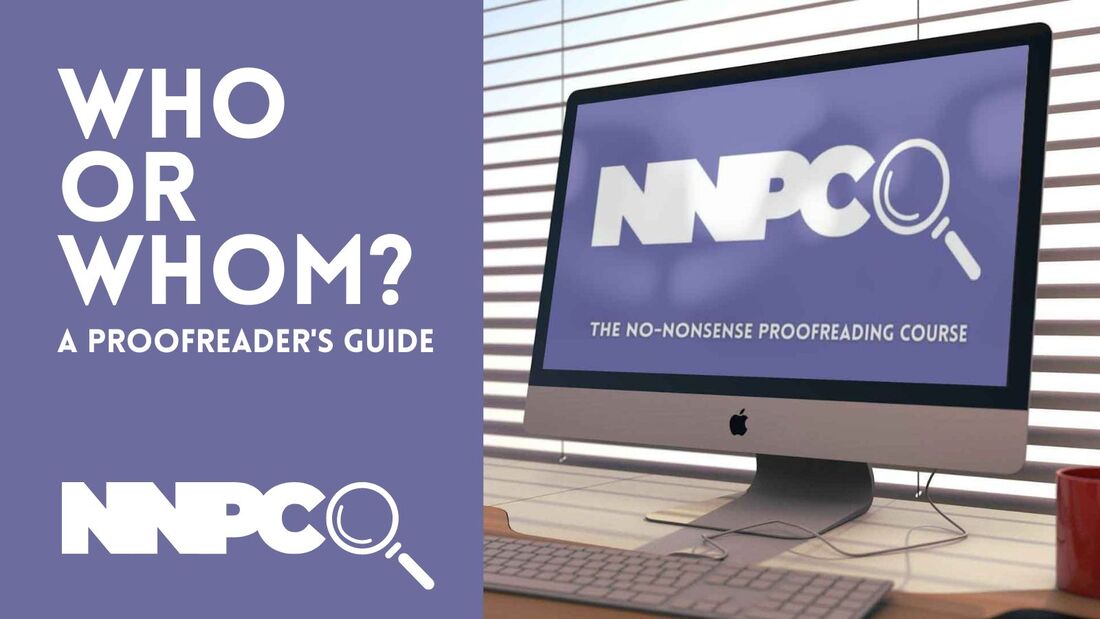


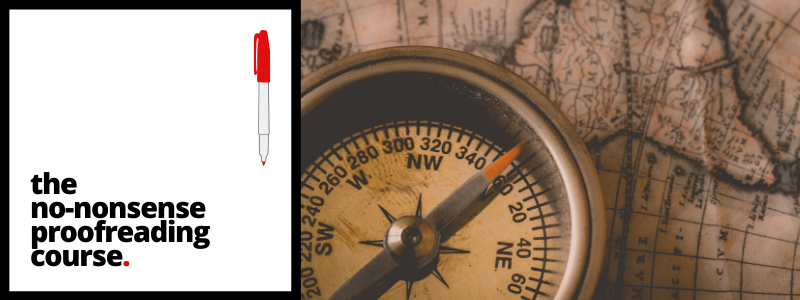
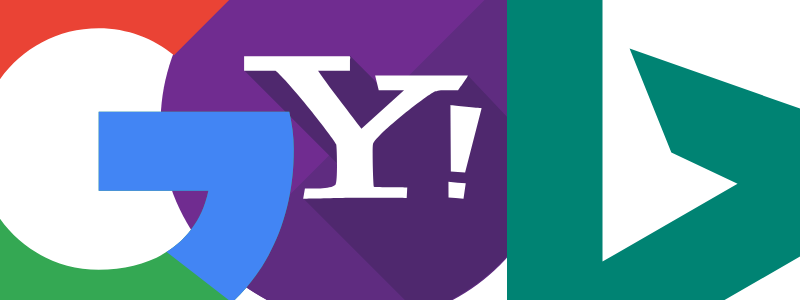
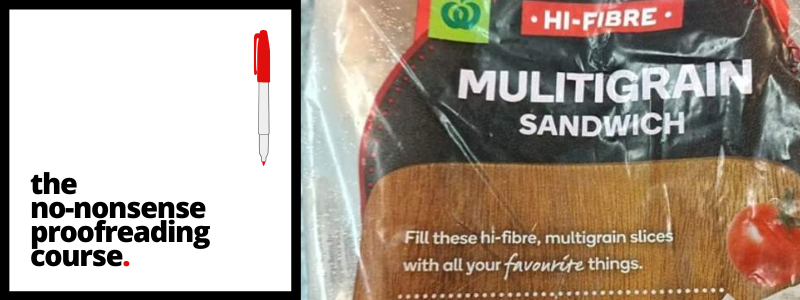

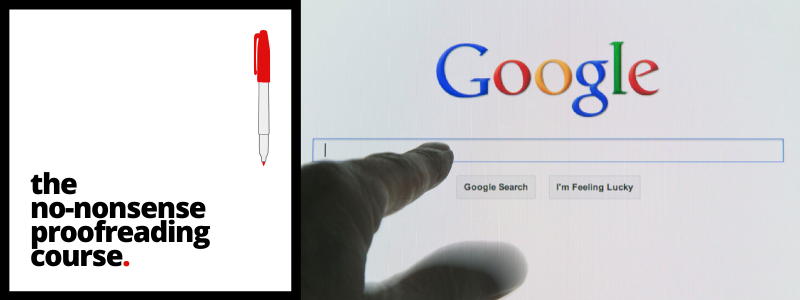

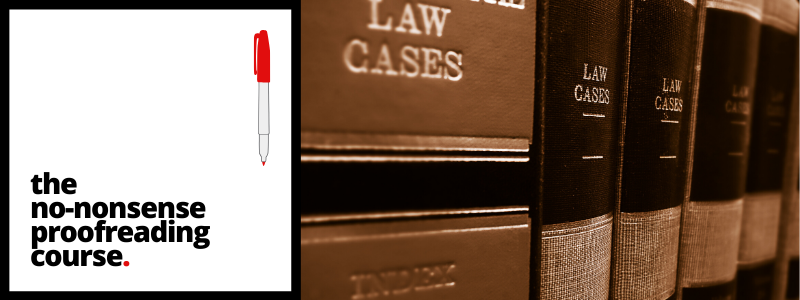

 RSS Feed
RSS Feed
